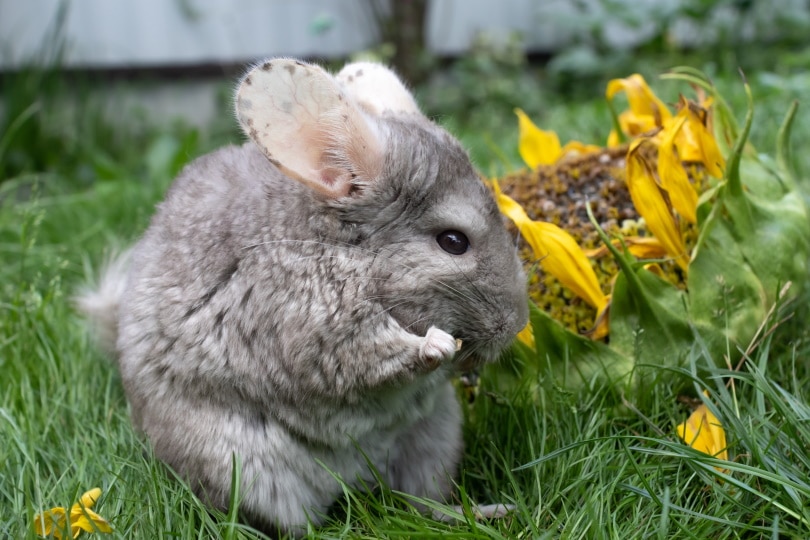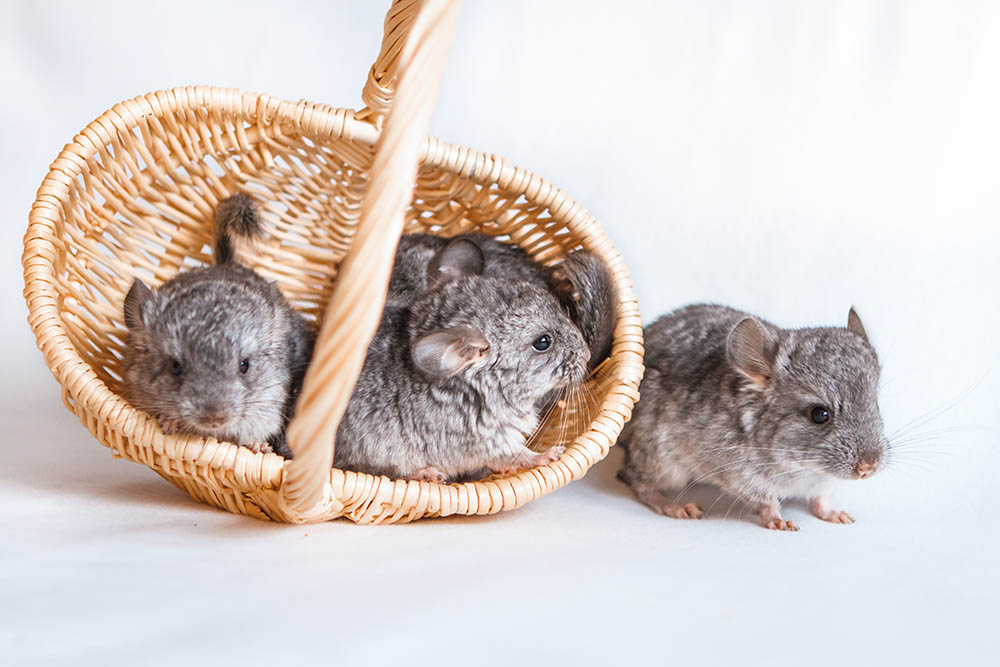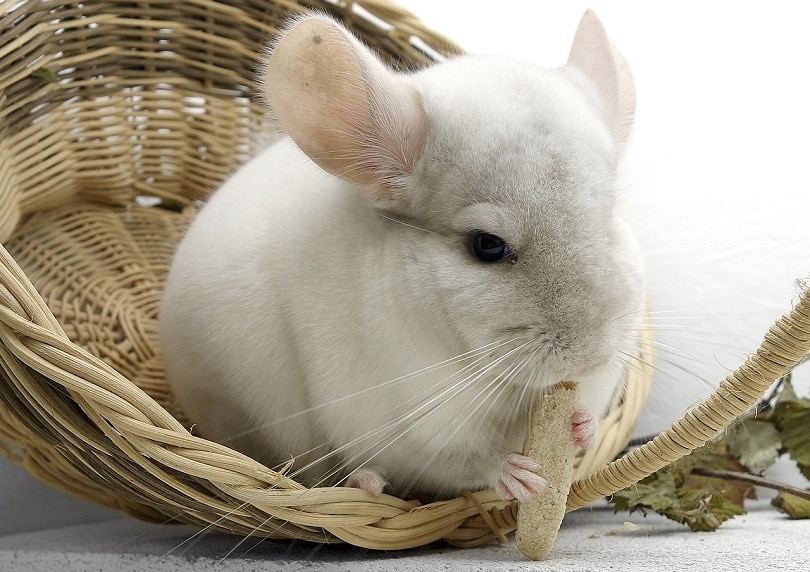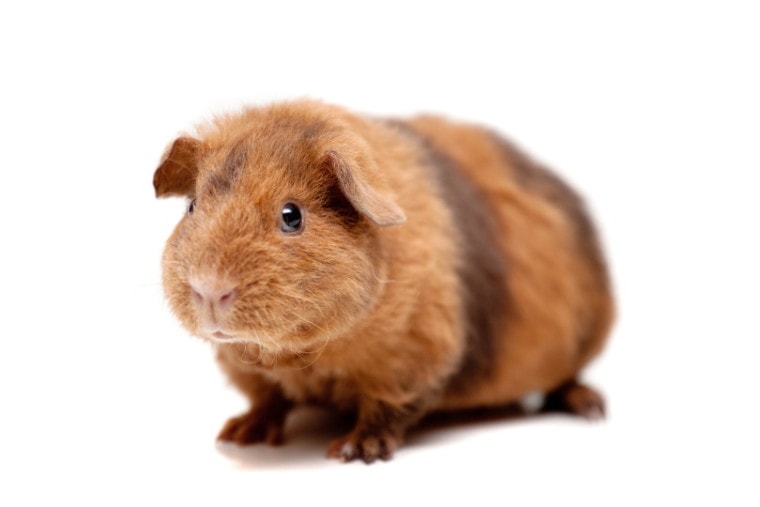
Teddy guinea pigs are small but not too small. They are vibrant and lively but not too excitable. These animals are cuddly, affectionate, and sociable. They have a lifespan of between 7 and 11 years, and they can weigh up to about 3.5 pounds once fully grown.
The teddy guinea pig has a dense coat that is soft and shiny, reminiscent of a teddy bear, hence their name. Their tight, dense fur is due to a genetic mutation, but it does not affect the health or happiness of these cute little animals.
They do not require much maintenance, and they are happy to spend their time alone or with other guinea pig friends when their human family members are busy. However, they will never turn down an opportunity to be snuggled or played with. Keep reading to learn more about the teddy guinea pig and how to properly care for them.
Quick Facts About the Teddy Guinea Pig
| Species Name: | Cavia Porcellus |
| Family: | Cavies |
| Care Level: | Medium |
| Temperature: | Warm/Humid (65 to 80 degrees Fahrenheit) |
| Temperament: | Friendly, affectionate, social, needy |
| Color Form: | Black, cream, gold, lilac, beige, brindle |
| Lifespan: | 7 to 11 years |
| Size: | 10 to 12 inches and 1 to 3.5 pounds |
| Diet: | Hay, vegetables, herbs |
| Minimum Tank Size: | 8 square feet per animal |
| Tank Setup: | Bedding, toys, hideouts, food, water |
| Compatibility: | Yes, with each other |
Teddy Guinea Pig Overview
Like all guinea pigs, the teddy guinea pig hails from South America, where they were thought to have been domesticated thousands of years ago. These animals were not pets, however. Teddy guinea pigs were originally raised to be food or offered as a gift to the gods.
These large rodents are cute, cuddly, and fun-loving, which makes them the perfect pet option for families with children. They prefer spending their time with humans or other guinea pigs, but they can get along fine on their own if they have regular interactions with their family members.
These animals need a large cage or glass habitat to spend much of their time in and to keep them safe from larger pets and accidents around the house. While they are typically gentle, they are known to nip when they feel cornered or threatened, so they should always be handled with a caring and patient hand.
How Much Do Teddy Guinea Pigs Cost?
Teddy guinea pigs are affordable pets compared to many other options on the market, selling between $10 and $30. The cost of a teddy guinea pig can vary depending on exactly where you purchase one from, what their health condition is, and how long they have been for sale. There is also a chance that you can find one of these snuggly pets at the humane society or through an animal rescue facility for a fraction of the cost, if not for free.
Typical Behavior & Temperament
When not handled by humans regularly, teddy guinea pigs can be timid and shy. But if they have opportunities to interact with people, they are outgoing and social critters. They call out in excitement when their family members come home, and they can spend all day long chattering with cage mates
These critters love to hide in caves and under blankets. They enjoy playing with toys and will turn anything, from their bedding to a piece of fruit, into a toy. A joyful attitude makes them comical at times. Their affectionate side makes them endearing and lovable.
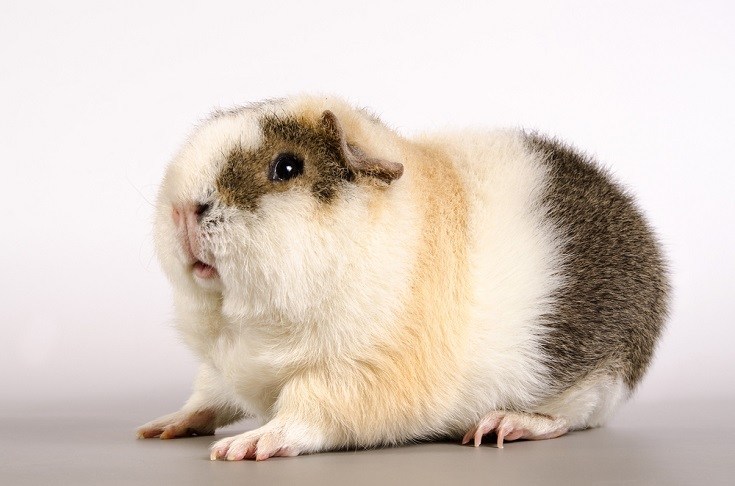
Appearance & Varieties
The teddy guinea pig is large for a rodent but small for a typical pet. They can be 12 inches long and weigh in at anywhere from 1 to 4 pounds once they become fully grown. The boys are usually a little bigger than the girls. They have round, slightly upturned noses and fluffy heads.
Their dark beady eyes always seem alert, and their floppy ears are nothing short of adorable. Their compact bodies make them look like little stuffed animals while they sleep.
Some teddy guinea pigs are solid colored, while others have two or three different colors, with their bellies typically being white.
Habitat Conditions & Setup
Teddy guinea pigs have special care needs that typical pets like dogs and cats do not. Specific measures must be taken to keep a teddy guinea pig happy and healthy throughout their life. Here is what you should know about caring for one or more of these critters.
Enclosure
These guinea pigs need an enclosed habitat to live in that will keep them from roaming around the house, where they could injure themselves and make huge messes. A premade habitat can be purchased or one can be made out of things like plastic pipes, screens, old furniture, and boxes.
Each guinea pig needs at least 8 square feet of space inside their habitat to move around and explore. The habitat does not need to be enclosed if predator pets do not live in the home, as guinea pigs typically do not bother trying to climb up walls if all their needs are met.
Bedding
Bedding should be spread out on the floor of a teddy guinea pig’s habitat for comfort and to help soak up liquid due to water spills and urination. The bedding should be soft and absorbent and easy to clean out regularly. Multiple types of bedding can be purchased for convenience, or it can be created by shredding up newspaper or paper towels. However, homemade bedding is not typically as absorbent or odor-resistant as store-bought options. The bedding will need to be changed at least once a week to keep the habitat clean and sanitary.

Temperature & Lighting
Teddy guinea pigs like to live in warmer temperatures of between 65 and 80 degrees Fahrenheit. A blanket should be placed over the habitat or a space heater set up nearby when it gets cold. Fans can help keep warmer spaces cool. These animals like it to be light during the day and dark at night, so they can live anywhere in the house other than in a closet or another place that stays predominantly dark.
Accessories
A teddy guinea pig’s habitat should be outfitted with a food and water dish, both of which should come with attachments for the habitat that will help keep them in place and from tipping over. Chewy treats and interactive toys are also vital accessories that these animals need access to for an enriched quality of life.
Do Teddy Guinea Pigs Get Along With Other Pets?
Teddy guinea pigs get along with all guinea pig breeds and can live happily in a pack. However, when it comes to other animals, guinea pigs typically want to be left alone. They feel threatened by larger animals, and pets like dogs and cats tend to think of them as prey. Therefore, it is best to keep them separated from larger animals for their safety and comfort.
What to Feed Your Teddy Guinea Pig
Teddy guinea pigs eat mostly grasses like alfalfa and wheat. Growing or picking enough for them to eat can be time-consuming and inconvenient, but fortunately, there are many commercial foods on the market that include all the hay nutrients and other goodies, like shelled peanuts and dried fruit, that a guinea pig needs for good health. These foods typically come in pellet form.
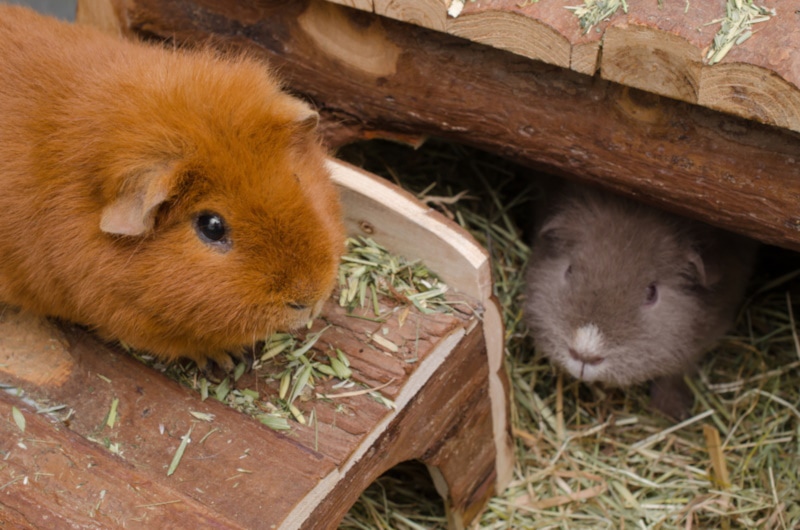
These animals should be offered about 1 cup of cut-up vegetables every day to support their immune system and help keep their digestion regular. They can eat lettuce, carrots, spinach, tomatoes, bell peppers, and peas, among other things. Fruits high in vitamin C, such as oranges and strawberries, can be offered in small amounts throughout the week.
Keeping Your Teddy Guinea Pig Healthy
Keeping a teddy guinea pig healthy throughout their life means cleaning their habitat out and changing the bedding at least once a week. It means spending quality time with the animal by handling them, talking to them, and playing with them. It also means taking them to the veterinarian for a checkup once a year to catch any health problems so they can be quickly and effectively addressed.
Breeding
Keeping a male and female guinea pig in the same habitat if they have not been fixed can result in many babies, as these rodents tend to breed easily and frequently. However, breeding can decrease the quality of life and overall lifespan of a female teddy guinea pig. Therefore, if multiple guinea pigs will be living in the same habitat, they should be of the same sex or be spayed and neutered first.
Final Thoughts
To determine whether a teddy guinea pig is right for you and your household, make a list of all the things that you need to invest in before buying one, and find out how much commitment everyone in the household has for taking care of a guinea pig. You should also visit a pet shop or friend who owns a teddy guinea pig and spend time with one or two before deciding whether to commit yourself financially and emotionally.
Do you think that a teddy guinea pig is right for your family? Do you have experience with these animals, or are you new to them? Let us know your thoughts by leaving a comment!
Featured Image Credit: Rosa Jay, Shutterstock


